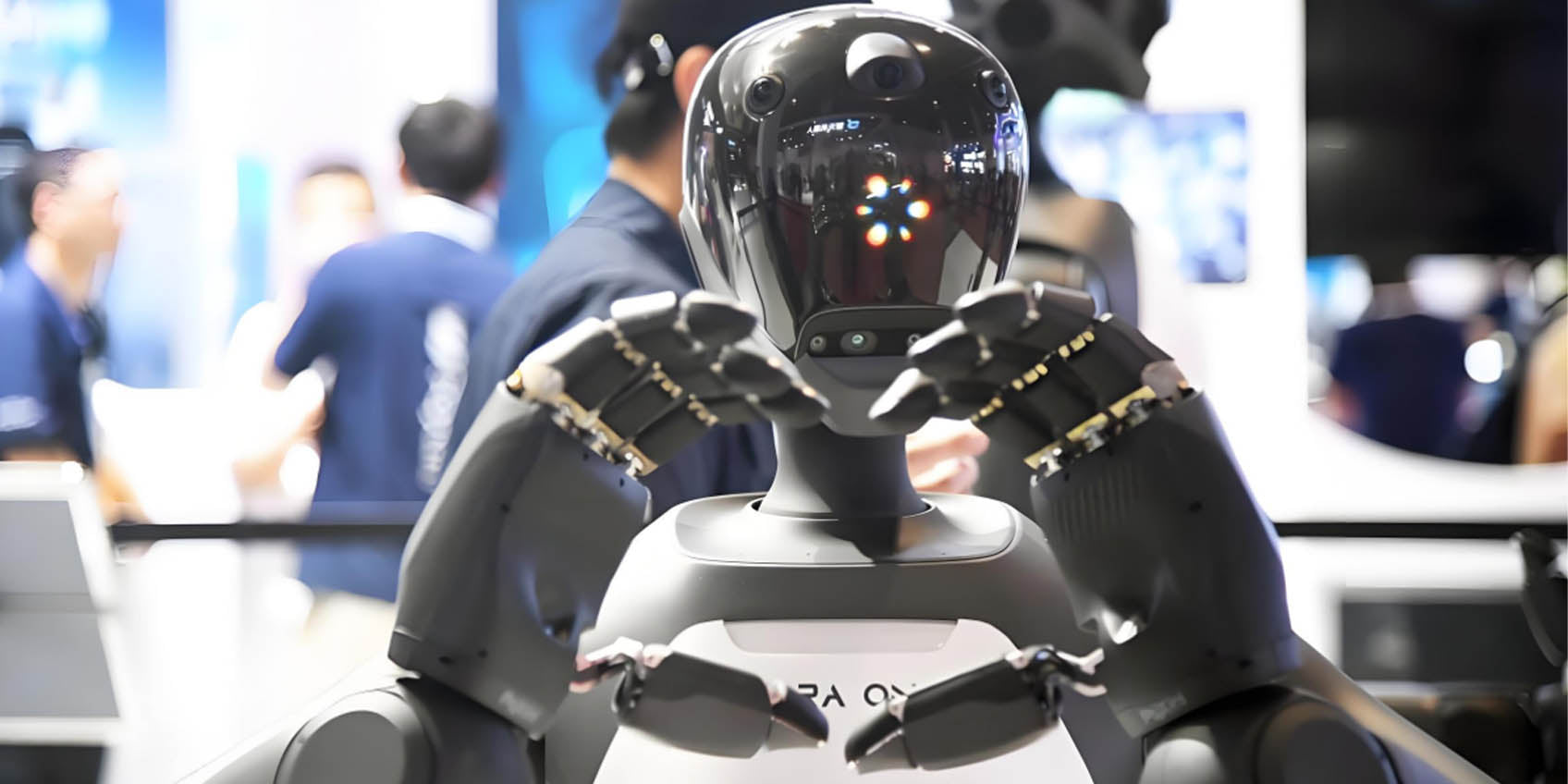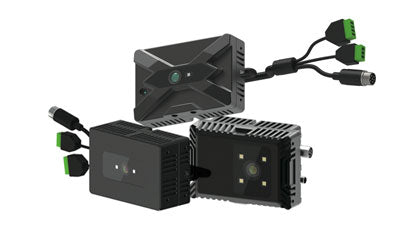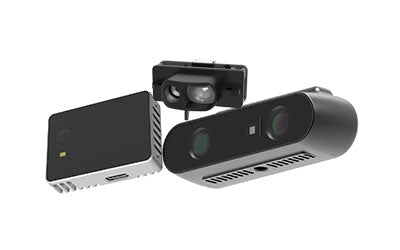TOF Technology: Revolutionizing Robot Vision for Enhanced Precision
- Posted by TofSensor

The Important Role of TOF Technology in Robot Vision
With the rapid development of artificial intelligence and automation technology, robot vision has become an indispensable core component of intelligent robots. Robots use visual systems to perceive the surrounding environment, perform object recognition, path planning, obstacle avoidance, and other tasks, playing an increasingly important role in various scenarios such as industrial automation, logistics, and healthcare. As an advanced depth-sensing technology, TOF (Time-of-Flight) technology plays a crucial role in robot vision systems, especially in improving accuracy, enhancing operational efficiency, and enabling autonomous navigation.
Basic Principle of TOF Technology
The principle of TOF technology is to emit light pulses and measure the time difference between the light pulse sent from the sensor and the time it takes for the light to be reflected by an object and return. Based on this principle, TOF sensors can provide 3D depth data for robots, rather than just 2D image data. Compared to traditional cameras and sensors, TOF technology can accurately capture the position and shape of every object in space, allowing robots to intelligently perceive the surrounding environment.
What is a ToF Sensor Used for?
TOF (Time-of-Flight) sensors are primarily used to measure the distance between an object and the sensor. They work by emitting light pulses and measuring the time it takes for the pulse to return after reflecting off an object. TOF sensors are widely used in the following fields:
- 3D Imaging and Depth Sensing: Used to create 3D images or depth maps, commonly applied in facial recognition, object detection, etc.
- Autonomous Driving and Robot Navigation: Helps vehicles or robots perceive the surrounding environment, perform obstacle avoidance, and path planning.
- Gesture Recognition and Interaction: Used to detect human or hand movements, applied in touch screens, virtual reality devices, etc.
- Industrial Automation: Used for object detection, location tracking, and item counting on production lines.
- Environmental Monitoring: Used to measure the distance, volume of objects, and even monitor environmental changes, such as air quality.
TOF sensors are widely used in scenarios that require precise distance measurement due to their high accuracy, real-time performance, and long-range measurement capabilities.
Applications of TOF Technology in Robot Vision
1. Object Recognition and Localization
In tasks, especially in manufacturing and logistics, robots need to recognize and locate objects through their visual systems. Traditional 2D camera systems cannot accurately determine the shape, size, and position of objects, especially in complex or obstructed environments. TOF technology can provide real-time 3D depth information, enabling robots to more accurately perceive the actual position and depth of objects, ensuring high efficiency and accuracy in object recognition. TOF sensors can handle both static and dynamic objects, quickly capturing changes in dynamic environments to help robots perform tasks in complex scenarios.
2. Obstacle Avoidance and Path Planning
TOF technology is essential in autonomous navigation for robots. In automated production lines, smart warehouses, and other scenarios, robots need to avoid obstacles and select the appropriate path. By using TOF sensors, robots can obtain real-time 3D depth information of their surroundings, creating detailed 3D maps to effectively avoid obstacles. In complex environments, robots can calculate in real-time and dynamically plan paths, avoiding unexpected obstacles and continuously updating their routes to ensure smooth and efficient work processes.
3. Precise Gripping and Manipulation
In automated production lines and logistics, robots often need to pick up and move objects. TOF sensors can provide millimeter-level precision depth data, ensuring robots can accurately identify the position, shape, and size of objects for precise gripping. This is especially advantageous when handling irregular objects. Compared to traditional cameras, TOF sensors are better able to adapt to changes in lighting and reflections, ensuring that robots can reliably complete gripping tasks, improving work efficiency and precision.
4. Multi-Robot Collaboration
As industrial automation evolves, multiple robots often need to work together to complete tasks. TOF technology provides each robot with real-time depth information, enabling them to sense each other's positions and coordinate actions. For example, in warehouse management, multiple robots may need to move items together. TOF technology helps each robot avoid collisions with others and ensures the correct handling of items. By sharing and coordinating depth data, multi-robot systems can collaborate more efficiently to complete large-scale, complex tasks.
Advantages of TOF Technology in Robot Vision
1. High Accuracy and Reliability
A notable advantage of TOF technology is its millimeter- or even micrometer-level measurement accuracy. For industrial production lines and high-precision tasks (such as assembly, inspection, etc.), robots' visual systems must acquire accurate depth data. The 3D depth data provided by TOF sensors enables robots to precisely locate and manipulate objects, meeting the needs of high-precision tasks. Additionally, TOF technology's high accuracy and stability allow robots to efficiently perform tasks in complex work environments.
2. Not Affected by Lighting Conditions
Traditional 2D vision systems are easily influenced by changes in ambient lighting, such as strong light, shadows, or low-light environments, which can severely affect their performance. However, TOF sensors emit and receive infrared light pulses, enabling them to operate stably in almost any lighting condition. Whether in bright sunlight or low-light environments, TOF sensors provide stable and reliable data output, ensuring robots can perform tasks in various environmental conditions.
3. Fast Response and Real-Time Performance
TOF sensors respond very quickly, providing real-time depth data to robots. This is crucial for applications requiring rapid response and adaptation to changes. Especially in dynamic environments, robots must quickly sense and make decisions. TOF technology's fast response enables robots to react flexibly in complex, changing environments, reducing errors and delays.
4. Simplified System Integration
Another advantage of TOF technology is its ease of integration. Traditional 3D sensing systems often require multiple sensors, complex algorithms, and processing systems, while TOF technology can acquire the required 3D depth data with a single sensor, simplifying system design and integration. This allows TOF technology to offer lower costs, higher efficiency, and greater flexibility for robot vision systems.
Future Prospects of TOF Technology and Robot Vision
With the continuous progress of deep learning, artificial intelligence, and data processing technologies, the integration of TOF technology and robot vision will become even more seamless. Robots will not only rely on sensor perception capabilities but also use data analysis and intelligent decision-making to accomplish more complex tasks. For example, in intelligent manufacturing, robots will be able to obtain precise 3D data through TOF sensors, combining deep learning algorithms to analyze the state of objects and perform precise assembly, quality inspection, and other tasks.
In the future, TOF technology will play an increasingly important role in autonomous driving, smart healthcare, and other fields. For instance, in autonomous vehicles, TOF sensors provide real-time depth information to help with path planning and obstacle avoidance. In healthcare, TOF technology can help robots perform precise surgical operations, improving surgical precision and safety.
Conclusion
TOF technology, as an advanced 3D sensing technology, provides strong support for robot vision systems, enhancing robots' application capabilities in various fields. Its high precision, insensitivity to lighting conditions, fast response, and other characteristics allow robots to perform tasks such as object recognition, path planning, and precise manipulation in dynamic and complex environments, driving the development of industrial automation, intelligent logistics, and medical robotics.
With the advancement of technology, TOF technology will further promote the evolution of robot vision systems, making robots smarter, more precise, and more efficient. With the emergence of more innovations, TOF technology will bring more possibilities to future robot applications.
Synexens 3D Of RGBD ToF Depth Sensor_CS30
Our professional technical team specializing in 3D camera ranging is ready to assist you at any time. Whether you encounter any issues with your TOF camera after purchase or need clarification on TOF technology, feel free to contact us anytime. We are committed to providing high-quality technical after-sales service and user experience, ensuring your peace of mind in both shopping and using our products.
-
Posted in
CS30






